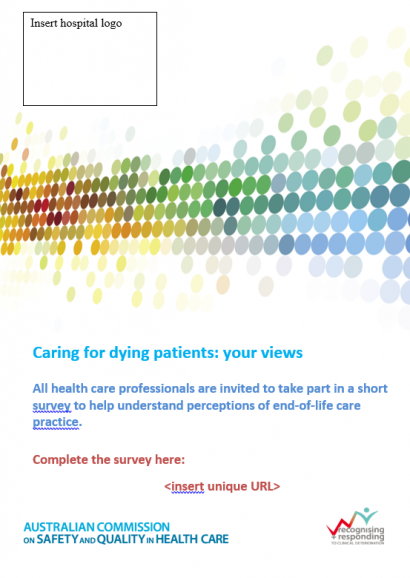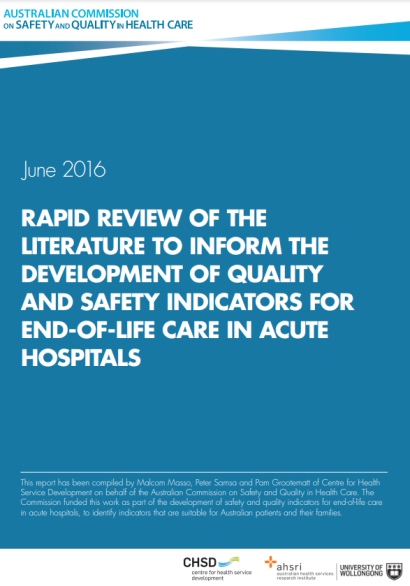NSQHS Standards
The Commission approves accrediting agencies to assess health services to the NSQHS Standards, MPS Module, and/or the National Clinical Trials Governance Framework under the Australian Health Service Safety and Quality Accreditation Scheme.
This week’s issue includes items on opioid addiction, harm prevention, health information technology, patient and visitor aggression and more.
Also covered are new issues of BMJ Quality & Safety and Diagnosis, along with the latest online papers from BMJ Quality & Safety and the International Journal for Quality in Health Care.
This editable word document can be used to advertise the end-of-life care survey to the clinical workforce.
This resource is a Powerpoint presentation template to explain the end-of-life care survey to staff.
Two groupers have been developed to support the implementation of the hospital-acquired complications (HACs) list. These tools can be used by hospitals, health services and system managers to identify and monitor HACs.
This review informs the development of indicators to measure the safety and quality of end-of-life care in acute hospital settings.
The Commission engaged the Centre for Health Service Development based at the University of Wollongong to perform a rapid review of the literature to identify existing work and inform the development of indicators to measure the safety and quality of end-of-life care in acute hospital settings.
The Commission engaged the Centre for Health Service Development based at the University of Wollongong to perform a rapid review of the literature to identify existing work and inform the development of indicators to measure the safety and quality of end-of-life care in acute hospital settings.


